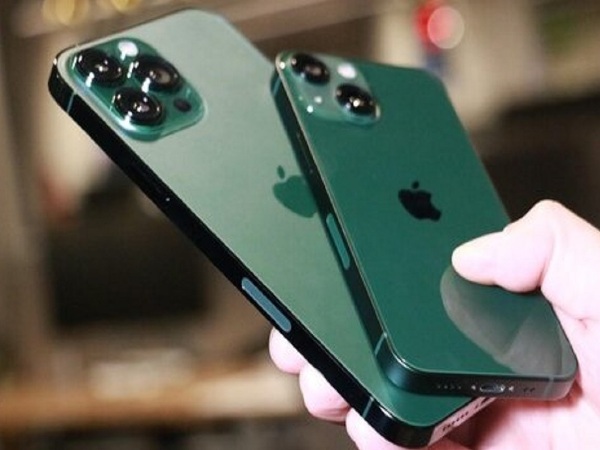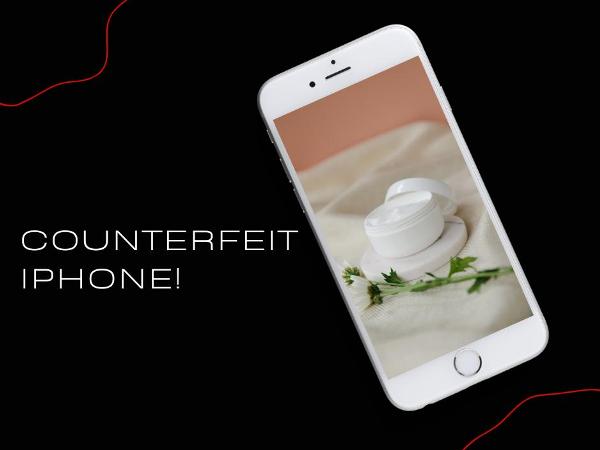The iPhone. It’s a status symbol, a technological marvel, and for many, a window to the world. But with its popularity comes a dark side: the proliferation of counterfeit devices. Imagine the sinking feeling of unwrapping your brand-new “iPhone,” only to discover it’s a cheap imitation. The frustration, the disappointment, the feeling of being duped – it’s a nightmare no one wants to experience. So how can you protect yourself? How can you ensure that the iPhone you’re buying is the real deal? Let’s dive in.
Telltale Signs of a Fake iPhone
Spotting a counterfeit iPhone isn’t rocket science, but it does require a keen eye and a bit of know-how. Here are some red flags to watch out for:
Physical Inspection
The first line of defense is a thorough physical examination. A genuine iPhone boasts impeccable craftsmanship, while a fake one often reveals its true nature through shoddy construction.
Build Quality
Run your fingers along the edges, feel the weight in your hand. An authentic iPhone feels solid and premium, with tight seams and a smooth finish. A fake one might feel plasticky, flimsy, or have noticeable gaps.
Screen Quality
The iPhone’s display is a visual treat, with vibrant colors and sharp details. A counterfeit’s screen might appear dull, washed out, or pixelated. Pay attention to the responsiveness of the touch screen as well.
Buttons and Ports
Inspect the buttons and ports closely. They should feel firm and click smoothly. On a fake iPhone, they might be loose, wobbly, or misaligned.
Logo and Engravings
The Apple logo and any engravings on the back should be crisp and clear. If they appear blurry, smudged, or misaligned, it’s a major red flag.
Software Scrutiny
A fake iPhone might look the part on the outside, but its software often betrays its true identity.
Operating System
A genuine iPhone runs on iOS, Apple’s proprietary operating system. A counterfeit might try to mimic iOS, but there will likely be inconsistencies, glitches, or missing features.
App Store
Try accessing the App Store. If it’s not the official Apple App Store, or if you encounter difficulties downloading apps, it’s a sign of a fake.
Siri
Test Siri’s functionality. If it’s unresponsive, inaccurate, or has a robotic voice, it’s likely not the real deal.
iCloud
Attempt to log into iCloud. If you encounter problems or the interface looks different, it’s another red flag.

Performance Evaluation
An authentic iPhone delivers a seamless and powerful user experience. A counterfeit often struggles to keep up.
Camera
Take a few photos and videos. If the quality is poor, the colors are off, or the focus is slow, it’s a sign of a fake.
Battery Life
iPhones are known for their decent battery life. If the battery drains quickly or takes an unusually long time to charge, it’s suspicious.
Processing Speed
Try opening a few apps, playing a game, or browsing the web. If the phone feels sluggish, lags, or crashes frequently, it’s likely not genuine.
Price Check
If the price seems too good to be true, it probably is.
Too Good to be True
iPhones are premium devices with a price tag to match. If you find a brand-new iPhone being sold at a significantly lower price than the market rate, be wary.
Compare Prices
Do your research. Check the prices of the iPhone model you’re interested in from authorized retailers. This will give you a benchmark to compare against.
Purchase from Reputable Sources
The safest way to avoid a counterfeit iPhone is to buy from a trusted source.
Authorized Retailers
Stick to Apple Stores, authorized resellers, or reputable carriers. They have a vested interest in selling genuine products and protecting their reputation.
Avoid Online Marketplaces
Be cautious when buying from online marketplaces or third-party sellers. While there might be legitimate deals, the risk of encountering counterfeit devices is higher.
Additional Tips
Here are a few more tips to keep in mind:
Check IMEI Number
Every iPhone has a unique IMEI number. You can check it in the phone’s settings or on the box. Then, you can verify its authenticity on Apple’s website.
Ask for Original Packaging and Accessories
A genuine iPhone comes with original packaging and accessories like a charger, cable, and earphones. If the seller can’t provide these, it’s a red flag.
Trust Your Gut
If something feels off about the deal or the seller, walk away. It’s better to be safe than sorry.
Conclusion
Buying an iPhone should be an exciting experience, not a stressful one. By following these tips and staying vigilant, you can avoid the nightmare of ending up with a counterfeit device. Remember, an authentic iPhone is an investment, and it’s worth taking the time to ensure you’re getting what you pay for. So, the next time you’re in the market for an iPhone, keep your eyes peeled, do your research, and buy from a trusted source. Happy shopping!
FAQs
- Can I spot a fake iPhone just by looking at it? While some counterfeits have obvious physical flaws, others can be quite convincing. It’s essential to combine visual inspection with software checks and performance evaluation for a more accurate assessment.
- Are there any apps that can help me detect a fake iPhone? There are a few apps that claim to detect fake iPhones, but their reliability can vary. It’s always best to rely on a combination of methods, including physical inspection, software scrutiny, and performance evaluation.
- What should I do if I accidentally bought a fake iPhone? If you suspect you’ve been sold a counterfeit iPhone, contact the seller immediately and request a refund. If they refuse, you might need to escalate the matter to your credit card company or consumer protection agency.
- Is it illegal to sell counterfeit iPhones? Yes, selling counterfeit products is illegal in most countries. It’s a form of fraud that can result in serious consequences for the seller.
- How can I report a seller who is selling fake iPhones? You can report the seller to the platform where you encountered them (e.g., online marketplace, social media) or to your local law enforcement agency.
Welcome to the Melex Family!
We invite you to join the Melex family and experience the joy of the iPhone community in Orange County. Visit us today, immerse yourself in the latest Apple technology, and let our experts guide you towards maximizing your iPhone experience.
We look forward to welcoming you and fostering a vibrant community of iPhone enthusiasts together!


